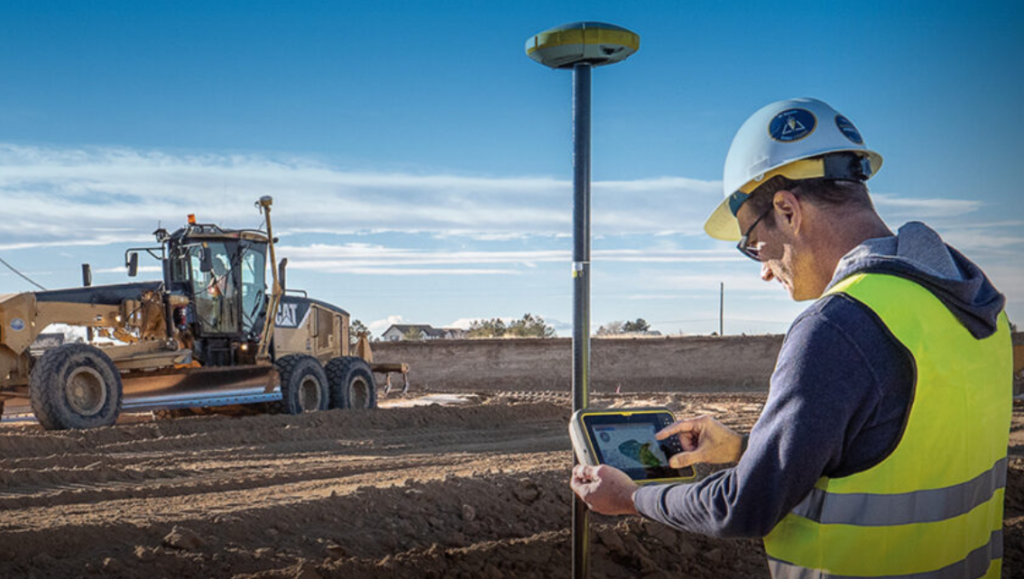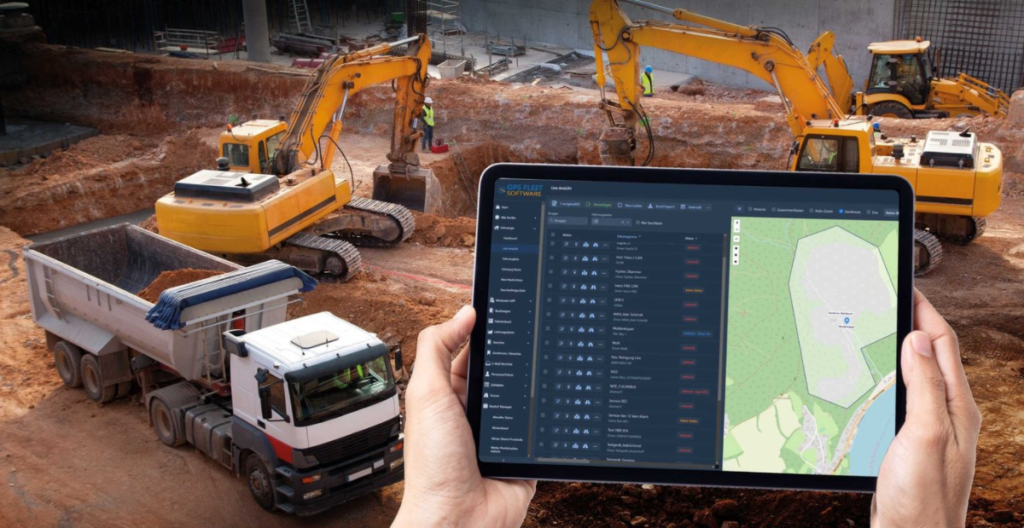The construction industry has seen remarkable advancements in recent years, driven by the adoption of cutting-edge technologies. Innovations such as Building Information Modeling (BIM), drones for site surveys, and advanced materials have revolutionized the way construction projects are planned and executed. Among these advancements, GPS and telematics technologies stand out for their significant impact on equipment operations, particularly in the use of excavators.
GPS (Global Positioning System) and telematics are two powerful technologies transforming the landscape of construction machinery. GPS uses a network of satellites to provide precise location data, while telematics combines telecommunications and informatics to collect and transmit data from remote assets. When integrated into excavators, these technologies provide a wealth of information and capabilities that enhance operational efficiency and safety.
What is GPS?
GPS, or Global Positioning System, is a satellite-based navigation system that provides location and time information anywhere on or near the Earth where there is an unobstructed line of sight to four or more GPS satellites. Initially developed by the United States Department of Defense, GPS is now widely used for both military and civilian purposes.
Common Uses of GPS in Daily Life
GPS technology has become an integral part of everyday life, providing a multitude of applications that enhance convenience and safety:
Navigation: GPS is widely used in car navigation systems and smartphone maps to provide turn-by-turn directions and real-time traffic updates.
Tracking: Many logistics and delivery companies use GPS to track their vehicles and shipments, ensuring timely deliveries and efficient route planning.
Fitness: GPS-enabled fitness devices, such as smartwatches and fitness trackers, help users monitor their running, cycling, and hiking routes, providing data on distance, speed, and elevation.
Emergency Response: GPS is crucial for emergency services, allowing dispatchers to locate and send help to individuals in distress quickly and accurately.
Recreation: Outdoor enthusiasts use GPS for activities like geocaching, hiking, and sailing to navigate and explore safely.
What is Telematics?

Telematics is a technology that combines telecommunications and informatics to transmit information over long distances. It involves the collection, processing, and transmission of data from remote assets, such as vehicles or machinery, to a central system for monitoring and analysis. This technology enables real-time tracking, diagnostics, and control of equipment and vehicles.
Common Applications of Telematics in Various Industries
Telematics has a wide range of applications across different industries, enhancing efficiency, safety, and productivity:
1.Fleet Management:
Vehicle Tracking: Telematics systems enable real-time tracking of fleet vehicles, providing information on their location, speed, and routes.
Driver Behavior Monitoring: Fleet managers can monitor driver behavior, including speeding, harsh braking, and idling, to improve safety and reduce fuel consumption.
Maintenance Scheduling: Telematics data helps predict and schedule maintenance, reducing downtime and extending the lifespan of vehicles.
2.Construction:
Equipment Tracking: Telematics allows construction companies to monitor the location and usage of heavy machinery, such as excavators and bulldozers.
Operational Efficiency: By analyzing telematics data, companies can optimize equipment usage, reduce fuel consumption, and improve project timelines.
Safety Monitoring: Telematics systems can provide alerts for unsafe operating conditions or unauthorized use of equipment.
3.Insurance:
Usage-Based Insurance (UBI): Telematics data allows insurance companies to offer personalized premiums based on driving behavior and usage patterns.
Accident Reconstruction: In the event of an accident, telematics data can help reconstruct the event, providing valuable information for claims processing.
4.Public Transportation:
Route Optimization: Telematics helps optimize routes for buses and trains, improving efficiency and reducing travel time.
Passenger Information Systems: Real-time tracking data can be used to provide accurate arrival times and service updates to passengers.
5.Agriculture:
Precision Farming: Telematics systems in agricultural machinery allow farmers to monitor and control planting, fertilizing, and harvesting processes with high precision.
Equipment Management: Farmers can track the usage and performance of tractors and other machinery, ensuring optimal operation and maintenance.
Telematics technology is transforming industries by enabling better control, enhanced safety, and improved operational efficiency. Its integration into various sectors highlights its versatility and the significant benefits it brings to modern business practices.
Integration of GPS and Telematics in Excavator Operations

1.How GPS is Used in Excavators?
In excavator operations, GPS technology is primarily used to enhance the precision and efficiency of digging and grading tasks. Here’s how it works:
Accurate Positioning: GPS systems provide excavators with precise location data, allowing operators to know the exact position of the machine on a job site. This accuracy is crucial for tasks that require exact digging depths and locations.
Automated Guidance: Many modern excavators are equipped with GPS-guided systems that provide real-time feedback and automatic adjustments to the machine’s movements. This ensures that the excavator follows the planned path or grade without manual intervention.
Site Mapping: GPS can be used to create detailed maps of the work site, showing the topography and layout. These maps help operators plan and execute their tasks more effectively, avoiding obstacles and ensuring compliance with project specifications.
2.How Telematics is Used in Excavators?
Telematics in excavators provides comprehensive data and remote management capabilities that enhance operational efficiency and maintenance. Here’s how telematics is utilized:
Real-Time Monitoring: Telematics systems continuously monitor the excavator’s performance, including engine hours, fuel consumption, and hydraulic system status. This data is transmitted to a central system where it can be analyzed in real-time.
Predictive Maintenance: By analyzing data collected from the excavator, telematics can predict when parts are likely to fail or require maintenance. This proactive approach minimizes downtime and extends the life of the equipment.
Operational Insights: Telematics provides detailed reports on how the excavator is being used, including work hours, idle times, and productivity metrics. This information helps managers optimize machine use and allocate resources more effectively.
Safety and Security: Telematics systems can include geofencing features that alert managers if an excavator leaves a designated area, as well as sensors that detect unsafe operating conditions or unauthorized use.
3.Benefits of Combining GPS and Telematics for Excavator Operations
Integrating GPS and telematics in excavator operations offers numerous benefits that significantly enhance the performance and management of construction projects:
1)Enhanced Precision and Efficiency
Accurate Positioning: GPS ensures that excavators operate within precise parameters, reducing errors and rework.
Optimized Operations: Telematics data allows for fine-tuning of equipment performance, ensuring tasks are completed efficiently and on schedule.
2)Improved Safety
Real-Time Alerts: Both GPS and telematics systems can provide real-time alerts for potential safety hazards, such as operating in restricted zones or detecting mechanical issues.
Geofencing: GPS-enabled geofencing helps prevent equipment theft and ensures machinery operates within safe areas.
3)Cost Savings
Reduced Fuel Consumption: GPS-guided routes and telematics data on engine performance help minimize fuel usage, lowering operational costs.
Maintenance Efficiency: Predictive maintenance enabled by telematics reduces unexpected breakdowns and expensive repairs.
4)Better Project Management:
Data-Driven Decisions: The combination of GPS and telematics provides a wealth of data that can be used to make informed decisions, optimize resource allocation, and improve overall project management.
Enhanced Visibility: Managers have a clear, real-time view of all excavator operations, enabling better oversight and coordination.
5)Environmental Benefits:
Reduced Emissions: Optimizing fuel consumption through GPS and telematics helps reduce the carbon footprint of excavator operations.
Efficient Resource Use: Accurate data on equipment use ensures resources are used efficiently, reducing waste and environmental impact.
The integration of GPS and telematics in excavator operations represents a significant advancement in construction technology. By leveraging these technologies, construction companies can achieve higher precision, improved safety, and greater efficiency, ultimately leading to more successful and cost-effective projects.
Key Benefits of GPS and Telematics in Excavator Operations

Enhanced Precision and Efficiency
1.Accurate Positioning for Digging and Grading: GPS technology provides precise location data, ensuring that excavators can perform digging and grading tasks with pinpoint accuracy. This reduces errors and ensures that the project meets exact specifications.
2.Reduced Need for Manual Measurements: With GPS-guided systems, the need for manual measurements is minimized. Operators can rely on real-time data to follow the planned path, saving time and reducing the likelihood of human error.
Improved Safety
1.Real-Time Monitoring of Equipment Location and Operation: Telematics systems enable continuous monitoring of excavator operations. Managers can track the location, speed, and operational status of equipment in real-time, enhancing oversight and coordination on the job site.
2.Alerts for Unauthorized Use or Unsafe Conditions: Both GPS and telematics can provide instant alerts if equipment is used outside of designated areas or in unsafe conditions. This helps prevent accidents, unauthorized use, and potential theft.
Cost Savings
1.Lower Fuel Consumption Through Optimized Routes: By analyzing GPS data, excavator routes can be optimized to reduce travel time and fuel consumption. Efficient route planning helps lower operational costs and environmental impact.
2.Reduced Maintenance Costs with Predictive Maintenance: Telematics systems monitor equipment health and predict when maintenance is needed. This proactive approach reduces unexpected breakdowns and associated repair costs, extending the lifespan of the machinery.
Better Project Management
1.Real-Time Data for Better Decision-Making: The integration of GPS and telematics provides managers with real-time data on equipment performance and site conditions. This data supports informed decision-making and timely adjustments to project plans.
Easy Tracking of Project Progress and Equipment Utilization: Detailed reports on excavator usage, work hours, and idle times help managers track project progress and optimize equipment utilization. This ensures resources are used efficiently and projects stay on schedule.
Conclusion
The integration of GPS and telematics in excavator operations has revolutionized the construction industry. These technologies provide enhanced precision, enabling operators to perform digging and grading tasks with unparalleled accuracy and efficiency. Real-time monitoring and alerts improve safety by preventing unauthorized use and detecting unsafe conditions. Cost savings are realized through optimized fuel consumption and predictive maintenance, while real-time data facilitates better project management and decision-making. The combined power of GPS and telematics is transforming how construction projects are executed, leading to more efficient, safe, and cost-effective operations.




